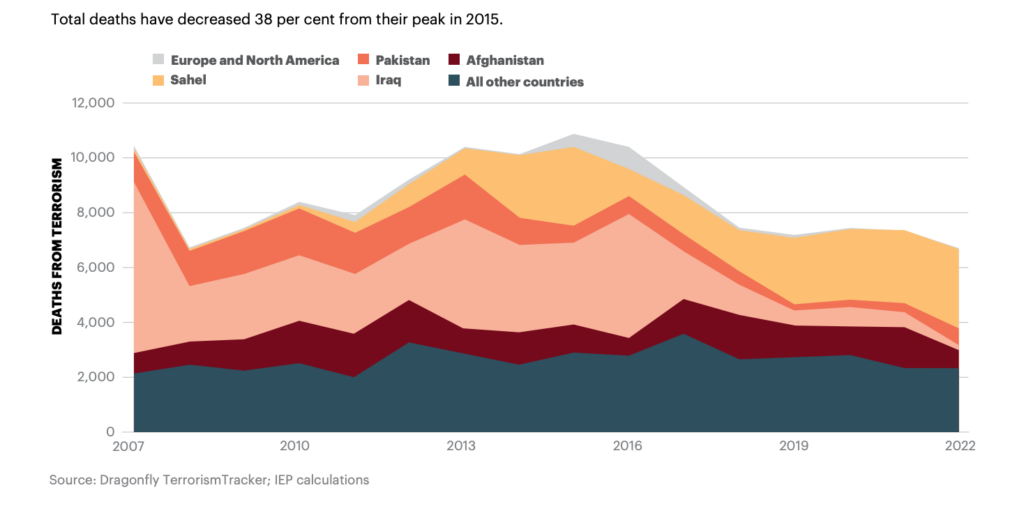Saharan Africa has replaced the Middle East as the epicentre of global terror
The Sahel region in Sub-Saharan Africa is now the epicentre of terrorism worldwide, constituting nearly half (43%) of the global death toll, according to the latest edition of the Global Terrorism Index (GTI). Up from 1% of the global total in 2007, incidents in the Sahel have increased by over 2000% in the last 16 years. As of this year, it accounts for more terror fatalities than South Asia and the Middle East & North Africa (MENA) combined, with the latter region experiencing a 32% fall this year — its lowest figure since 2013.
The report, produced by the Institute for Economics and Peace, uses data from sources including TerrorismTracker to study trends relating to terrorist activity across the world. The global death toll caused by terrorist attacks fell by 9% last year and is now 38% lower than its 2015 peak, with a 2022 total of 6,701. The number of attacks worldwide declined by 28% to 3,955, and 121 out of 163 countries surveyed — roughly three-quarters — recorded no deaths from terrorism. That is the highest number of fatality-free nations since 2007.
The Sahel has for some years been viewed as the new arena for jihadi operations. There have been six coup attempts in the region since 2021, four of which were successful. It is this political instability, as well as the correlation between national involvement in war and seriousness of attacks (seven times more deadly than in peaceful countries), which goes some way to explaining these figures, while most activity is concentrated in border areas, where government reach is less extensive. All 10 of the countries most affected by terrorism last year were also embroiled in armed conflict, and 98% of total deaths occurred in warzones. Four of that top ten are in the Sahel, while the region has become a theatre for proxy conflict between Russia and the West.

The number of terrorist attacks in the West is going down, but resulting deaths have risen again after a decrease in recent years. Just 40 attacks were recorded in the West last year, yet the number of deaths from those attacks has almost doubled, from nine to 19, 11 of which took place in the United States.
Though the Sahel is a hotbed for jihadi violence, and in spite of Islamic State’s continued influence, the latest GTI demonstrates that explicitly religiously motivated terrorism has gone down by 95% since 2016. In Europe, there were just two attacks carried out by Islamist extremists last year. The UK recorded four incidents falling into the category of terror attacks, resulting in no deaths — the first time this has happened since 2014.
The GTI ascribes the Sahel’s descent into violence to a number of factors, including “weak governance, ethnic polarisation […] the growth of transnational Salafi-Islam ideology, political instability […] and geopolitical competition”. The departure of French troops from Mali in late 2022 after an eight-year counter-terrorism campaign, Operation Barkhane, has led to surge in violence against Malian civilians. Of the Sahel total, 73% of terrorism deaths took place in Burkina Faso and Mali last year.

